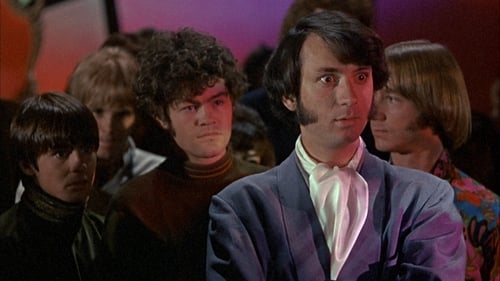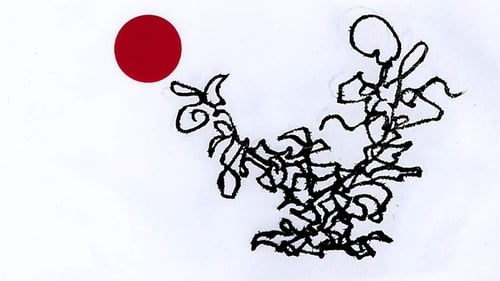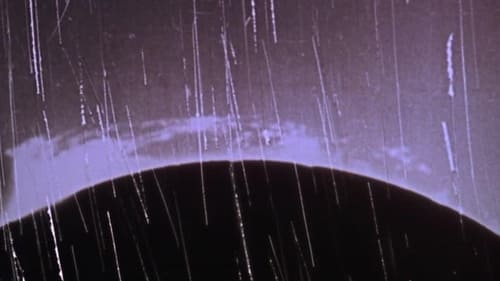
The Extravagant Shadows (2012)
장르 :
상영시간 : 2시간 55분
연출 : David Gatten
시놉시스
Suggestion is the rock, and the physical evidence is the evanescent spray that breaks against the unseen. Transitive enharmonics of things touching in middair, an air which is Time—not an actual intersection, but with a consequence as powerful as predestination, a momentary fulfillment, a trail beyond mere pattern, like a streak of truth alive and uncontained, like something that runs through infinity slowing to leave condensation, sonority, a temperature. Lines crossing lines. Not there. There. Invisibilities smudging. Gesture and impression, optic suggestions, agents on and in the mind. Each with vibrations, dollops, whispers, throbs, particles and waves. A finger of pigment brushing a lip of language exchanging carriage supports, liquidities, fire. Moire of meanings. Micro settings in the heart. The time it takes. The very least one can say is to say The Extravagant Shadows is a major work. Humanly essential, adventurous and necessary.

In this surrealistic and free-form follow-up to the Monkees' television show, the band frolic their way through a series of musical set pieces and vignettes containing humor and anti-establishment social commentary.

아프리카의 북서쪽 해안에 위치한 카보베르데라는 작은 섬나라의 마을. 포르투갈에서 온 간호사 마리아나는 건설현장에서 사고를 당한 레오를 간호한다. 레오는 자신의 처지에 분노하며, 그런 레오를 지켜보는 마리아나는 유럽의 식민지였던 이 땅의 아픈 역사를 생각한다.
(2021 포르투갈 영화제)

10년 동안 오랜 친구 ´이치´를 짝사랑해오던 요시카는 어느 날 직장동료 ´니´로부터 사랑고백을 듣는다. 두 명의 남자친구 사이에서 갈팡질팡하는 요시카의 사랑과 자아를 찾아 떠나는 여행이 시작된다. (2018년 제19회 전주국제영화제)

A cartoon detailing the unrequited love that the line has for the dot, and the heartbreak that results due to the dot's feelings for the lively squiggle.

A creation myth realized in light, patterns, images superimposed, rapid cutting, and silence. A black screen, then streaks of light, then an explosion of color and squiggles and happenstance. Next, images of small circles emerge then of the Sun. Images of our Earth appear, woods, a part of a body, a nude woman perhaps giving birth. Imagery evokes movement across time. Part of the Dog Star Man series of experimental films.

In this powerful abstract film with a soundtrack of African drum music, Lye scratched "white ziggle-zag-splutter scratches" on to black leader, using a variety of tools from saw teeth to arrow heads. The first version of the film won a major award at the International Experimental Film Festival Held in Brussels in 1958 in association with the World's Fair. Stan Brakhage described the film as "an almost unbelievably immense masterpiece".

Enigma is something of a more glamorous version of White Hole, with a wide variety of elaborate textures (often composed of iconographic and religious symbols) converging towards the centre of the screen.

This film, photographed in London, is an exploration into the depths of unconscious reactions.

Cut up animation and collage technique by Harry Smith synchronized to the jazz of Thelonious Monk's Mysterioso.

An exploration of Rodez Cathedral and its stained glass windows: praying figures and scientific imagery. A study on color, repetition and flickering consisting of 292 photographs.

Animation using cutout animation to craft a bizarre science fiction experiment. Moving spheres, such as balloons and bubbles, are superimposed on static backgrounds to suggest travel and discovery.

100 basic images switching positions for 4000 frames.

Man's rebellion against the world of the digits.

With 8 Switches, Tim Wright presents six black-and-white microcinematic vignettes of retina-searing, hard-edged, epilepsy-inducing sound and vision; digital hallucinations drained of colour, synchronized to a soundtrack that is relentless and unsentimental. Each new section presents a variation on the same sleek, kinetic minimalism. As each section progresses, the razor-sharp line between a host of binary oppositions—black/white, figure/ground, silence/sound, here/there, on/off — dissolves through sheer velocity. The rapid-fire alternation between these binary oppositions acts like the flicker of film frames, accelerating until sound and sight are wed into a synchronous whole in which neither the visual nor the sonic takes primacy. Instead, each acts as mutually constitutive literalisation of the other. — Joseph Clayton Mills

Here the artist creates a world of color, form, movement and sound in which the elements are in a state of controllable flux, the two materials (visual and aural) are subject to any conceivable interrelation and modification.

A live action footage of a smiling, bespectacled (presumably) Western tourist set against the familiar cadence of an accelerating train revving up as it leaves the station sets the mesmerizing tone for the film's abstract panoramic survey of an Ozu-esque Japanese landscape of electrical power lines, passing trains, railroad tracks, and the gentle slope of obliquely peaked, uniform rooflines as Breer distills the essential geometry of Mount Fuji into a collage of acute angles and converging (and bifurcating) lines .

Early Abstractions is a collection of seven short animated films created by Harry Everett Smith between 1939 and 1956. Each film is between two and six minutes long, and is named according to the chronological order in which it was made. The collection includes Numbers 1–5, 7, and 10, while the missing Numbers 6, 8, and 9 are presumed to have been lost.

An exploration of the relationship between sound and picture inspired by the two lights (twi-light) found inside film projectors.

We watch white shapes dancing on black background, which changes when the white shape fills up the screen completely, and black lines and figures bounce around on the now white background.

Black-and-white abstract animated short of light, shadows, and reflections by The Dodals (Karel Dodal (1900-1986) in collaboration with his wife, Irena Dodalová).











